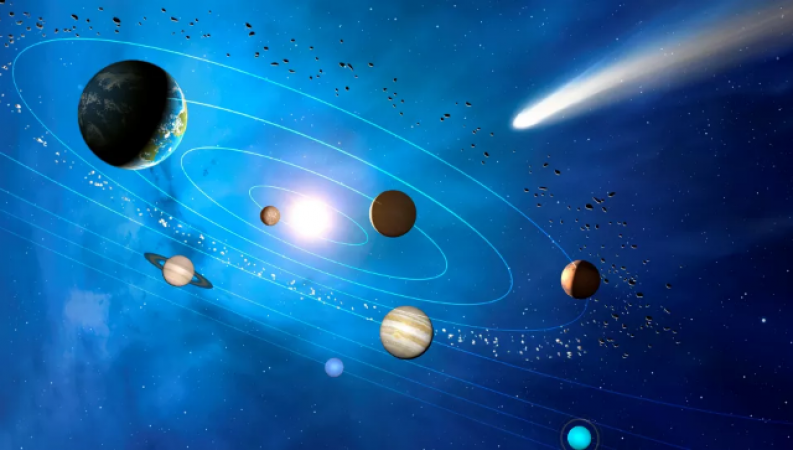
USA: The rare Venus-Jupiter-Moon conjunction will be followed by another extraordinary cosmic event just a few days later. Between March 25 and March 30, five planets—Mercury, Venus, Mars, Jupiter, Uranus, and the Moon will align as Earth enters the vernal equinox. They will become apparent just after dusk. You might want to catch this event earlier because Jupiter might become difficult to see after March 28.
For those who enjoy stargazing, the last few weeks have been nothing short of thrilling. The rare parade of five planets will soon pass us, following the rare green comet, Venus' alignment with Jupiter, and the rare green comet. Interestingly, we are expected to see more breathtaking auroras during this period around the March equinox.
The final few days of March will see the five planets close to one another, but March 28 will be the best day to see them. The planets will align just after sunset to create an arc-shaped appearance on the western horizon. The easiest object to locate will be Venus because it is the third brightest object in the sky after the Sun and Moon.
Also Read: The LVM3-M3/OneWeb India-2 mission is scheduled to launch on March 26
Other planets, like Uranus and Mercury, may be more difficult to see and necessitate the use of binoculars or a telescope. Mercury and Jupiter will be visible together. Be aware that you will only be able to see the two planets for a short while after sunset before they disappear below the horizon and you are unable to see them any longer.
On the other hand, Mars will be more visible in the month of March's final days. It will be highly visible in the southwest sky, directly above the crescent moon, and will have a bright red appearance. Mars will be slightly to the left of the Moon from March 25 to 27 before sinking below the Moon on March 28 and staying there for the rest of the month.
Also Read: The equinoxes in late March and late September are the best times to see auroras
To the left and above Venus will be Uranus. After the Sun has set, you will have about an hour to observe the two planets because they will also disappear into the horizon. Saturn, which will be low on the eastern horizon just after sunrise on March 27 and 28, would be a bonus to see.
Also Read: A new version of WhatsApp for iOS beta was recently released
If you want to see this celestial event, position yourself away from bright lights. While the majority of planets can be seen with the unaided eye, Uranus may require binoculars or a telescope to be seen. Additionally, astronomy apps like Sky Tonight or SkySafari can be downloaded, and they will show you precisely where each planet is in the night sky.